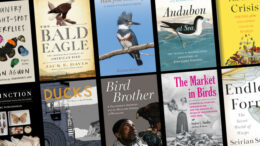Where would we be without the birds and the bees?
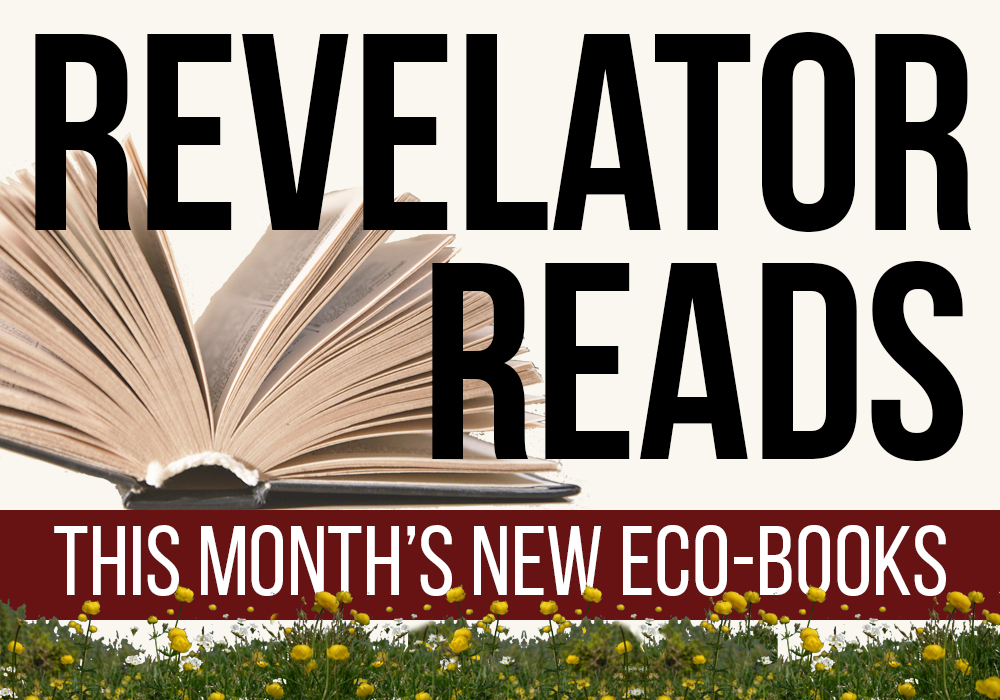 A flock of new books explores that question, while also looking at our relationship with our fine feathered friends and discussing how to save our winged wonder neighbors.
A flock of new books explores that question, while also looking at our relationship with our fine feathered friends and discussing how to save our winged wonder neighbors.
Below you’ll find capsule reviews and the publishers’ descriptions of more than a dozen new books — all released so far this year or just about to land on shelves — along with links to even more new titles. Many of these books explore our human relationship with wildlife and offer insight into the biodiversity flying above and around us. Some use birds as a lens to look at broader issues, like the extinction crisis or biomimicry. Others talk about the science or history of conservation, while a few seek to inform or inspire the next group of humans getting ready to leave the nest.
As usual, all links are to publishers’ or authors’ sites, but you can also find most of these titles from your local bookseller or library.
Sounds Wild and Broken: Sonic Marvels, Evolution’s Creativity and the Crisis of Sensory Extinction
by David George Haskell
 Our take: Imagine the added music we’d experience in our daily lives if we weren’t wiping out birds and other wildlife at a record pace. Recent research revealed that North America has lost a staggering 2.9 billion birds since 1970. With the decline of their songs goes a piece of our soul, but maybe this new book can help us find the strength to recover some of what we’ve lost.
Our take: Imagine the added music we’d experience in our daily lives if we weren’t wiping out birds and other wildlife at a record pace. Recent research revealed that North America has lost a staggering 2.9 billion birds since 1970. With the decline of their songs goes a piece of our soul, but maybe this new book can help us find the strength to recover some of what we’ve lost.
From the publisher: “We live on a planet alive with song, music and speech. David Haskell explores how these wonders came to be. In rain forests shimmering with insect sound and swamps pulsing with frog calls we learn about evolution’s creative powers. From birds in the Rocky Mountains and on the streets of Paris, we discover how animals learn their songs and adapt to new environments… Haskell takes us to threatened forests, noise-filled oceans and loud city streets, and shows that sonic crises are not mere losses of sensory ornament. Sound is a generative force, and so the erasure of sonic diversity makes the world less creative, just and beautiful. The appreciation of the beauty and brokenness of sound is therefore an important guide in today’s convulsions and crises of change and inequity.”
Related book — The Private Lives of Public Birds: Learning to Listen to the Birds Where We Live by Jack Gedney
Ducks: Two Years in the Oil Sands
by Kate Beaton
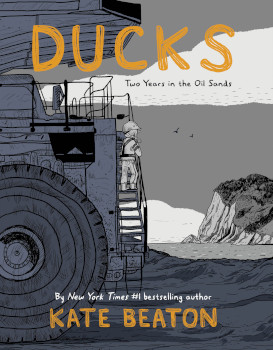 Our take: The titular ducks don’t appear in the publishers’ description below, and they barely show up on the graphic novel’s cover, but they play an essential, heartbreaking role in the narrative of this stunning memoir. Through the ducks, and through Beaton’s experiences working in a dehumanizing profession, the author shines a light on so much of what’s wrong (yet hidden from most eyes) about the fossil-fuel industry.
Our take: The titular ducks don’t appear in the publishers’ description below, and they barely show up on the graphic novel’s cover, but they play an essential, heartbreaking role in the narrative of this stunning memoir. Through the ducks, and through Beaton’s experiences working in a dehumanizing profession, the author shines a light on so much of what’s wrong (yet hidden from most eyes) about the fossil-fuel industry.
From the publisher: “Before there was Kate Beaton, New York Times bestselling cartoonist of Hark! A Vagrant, there was Katie Beaton of the Cape Breton Beatons, specifically Mabou, a tight-knit seaside community where the lobster is as abundant as beaches, fiddle and Gaelic folk songs. With the singular goal of paying off her student loans, Katie heads out west to take advantage of Alberta’s oil rush — part of the long tradition of East Coasters who seek gainful employment elsewhere when they can’t find it in the homeland they love so much. Katie encounters the harsh reality of life in the oil sands, where trauma is an everyday occurrence yet is never discussed.” (Available Sept. 12)
The Bald Eagle: The Improbable Journey of America’s Bird
by Jack E. Davis
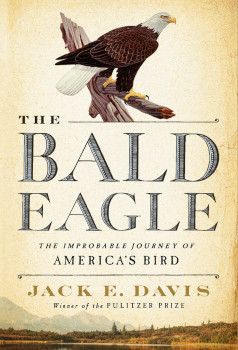 Our take: The new book by the Pulitzer Prize-winning author of The Gulf: The Making of an American Sea feels especially timely, with several new bird extinctions announced last year and the need to counter those losses with tales of conservation success.
Our take: The new book by the Pulitzer Prize-winning author of The Gulf: The Making of an American Sea feels especially timely, with several new bird extinctions announced last year and the need to counter those losses with tales of conservation success.
From the publisher: “Filled with spectacular stories of Founding Fathers, rapacious hunters, heroic bird rescuers, and the lives of bald eagles themselves — monogamous creatures, considered among the animal world’s finest parents — The Bald Eagle is a much-awaited cultural and natural history that demonstrates how this bird’s wondrous journey may provide inspiration today, as we grapple with environmental peril on a larger scale.”
Vultures of the World: Essential Ecology and Conservation
by Keith L. Bildstein
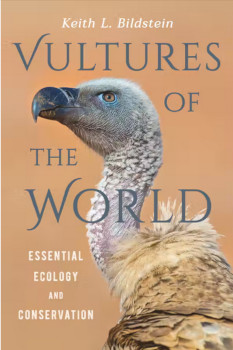 Our take: Vultures have faces that only a mother hen could love, and their taste in food is rather…unappetizing. Yet their inner beauty shines through in the critical role they play in the environment — one we’re losing as nearly all vultures and related species face rapid declines. This book offers insight into how to save them.
Our take: Vultures have faces that only a mother hen could love, and their taste in food is rather…unappetizing. Yet their inner beauty shines through in the critical role they play in the environment — one we’re losing as nearly all vultures and related species face rapid declines. This book offers insight into how to save them.
From the publisher: “Based on decades of personal experience, dozens of case studies and numerous up-to-date examples of cutting-edge science, this book introduces readers to the essential nature of vultures and condors. Not only do these most proficient of all vertebrate scavengers clean up natural and man-made organic waste but they also recycle ecologically essential elements back into both wild and human landscapes, allowing our ecosystems to function successfully across generations of organisms… Vultures and condors possess numerous adaptions that characteristically serve them well but at times also make them particularly vulnerable to human actions. Vultures of the World is a truly global treatment of vultures, offering a roadmap of how best to protect these birds and their important ecology.”
The Insect Crisis: The Fall of the Tiny Empires That Run the World
by Oliver Milman
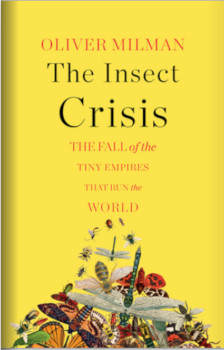 Our take: The insect apocalypse gets a big, terrifying book that also helps fill the reader with wonder for the insect kingdom.
Our take: The insect apocalypse gets a big, terrifying book that also helps fill the reader with wonder for the insect kingdom.
From the publisher: “Acclaimed journalist Oliver Milman dives into the torrent of recent evidence that suggests this kaleidoscopic group of creatures is suffering the greatest existential crisis in its remarkable 400-million-year history. What is causing the collapse of the insect world? Why does this alarming decline pose such a threat to us? And what can be done to stem the loss of the miniature empires that hold aloft life as we know it?”
Related kids’ book — Buzzkill: A Wild Wander Through the Weird and Threatened World of Bugs by Brenna Maloney; illustrated by Dave Mottram (available Oct. 11)
Halcyon Journey: In Search of the Belted Kingfisher
by Marina Richie
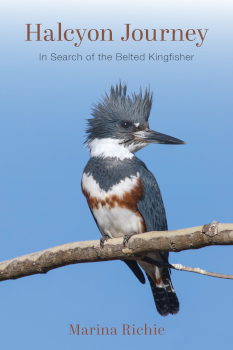 Our take: A very personal journey illuminates not just the species but, through the process of discovery, the writer.
Our take: A very personal journey illuminates not just the species but, through the process of discovery, the writer.
From the publisher: “More than one hundred species of kingfishers brighten every continent but Antarctica. Not all are fishing birds. They range in size from the African dwarf kingfisher to the laughing kookaburra of Australia. This first book to feature North America’s belted kingfisher is a lyrical story of observation, revelation and curiosity in the presence of flowing waters.”
Related memoir — Learning the Birds: A Midlife Adventure by Susan Fox Rogers
The Market in Birds: Commercial Hunting, Conservation and the Origins of Wildlife Consumerism, 1850–1920
by Andrea L. Smalley with Henry M. Reeves
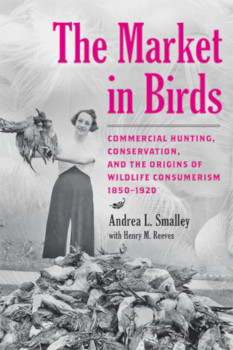
Our take: Given the continued decline of North American birds, this historical perspective on how we worked together to stem the tide of previous loss feels well-timed. Can we do it again?
From the publisher: “Touching on ecology, economics, law and culture, the authors reveal how commercial hunting set the terms for wildlife conservation and the first federal wildlife legislation at the turn of the twentieth century. Smalley and Reeves delve into the ground-level interactions among market hunters, game dealers, consumers, sportsmen, conservationists and the wild birds they all wanted. Ultimately, they argue, wildfowl commercialization represented a revolutionary shift in wildlife use, turning what had been a mostly limited, local and seasonal trade into an interstate industrial-capitalist enterprise. In the process, it provoked a critical public debate over the value of wildlife in a modern consumer culture.”
Related book — Wilted Wings: A Hunter’s Fight for Eagles by Mike McTee
Bird Brother: A Falconer’s Journey and the Healing Power of Wildlife
by Rodney Stotts with Kate Pipkin
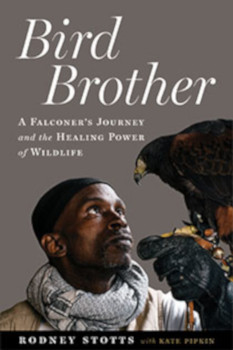 Our take: Think of this as “F Is for Falcon.” In this moving memoir, we see how nature heals — but only if you’re given the chance to experience it.
Our take: Think of this as “F Is for Falcon.” In this moving memoir, we see how nature heals — but only if you’re given the chance to experience it.
From the publisher: “To escape the tough streets of Southeast Washington, D.C. in the late 1980s, young Rodney Stotts would ride the metro to the Smithsonian National Zoo. There, the bald eagles and other birds of prey captured his imagination for the first time. In Bird Brother, Rodney shares his unlikely journey to becoming a conservationist and one of America’s few Black master falconers.”
30 Animals That Made Us Smarter: Stories of the Natural World That Inspired Human Ingenuity
by Patrick Aryee
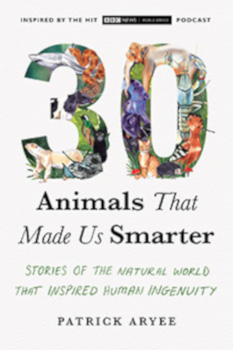 Our take: Birds and bugs take up nearly a third of this fun, wide-ranging book that reveals dozens of ways humans have developed new techniques and technologies — many of them lifesaving — by observing and mimicking the animal kingdom. That’s hardly the only reason to stop the extinction crisis, but it’s a pretty good one.
Our take: Birds and bugs take up nearly a third of this fun, wide-ranging book that reveals dozens of ways humans have developed new techniques and technologies — many of them lifesaving — by observing and mimicking the animal kingdom. That’s hardly the only reason to stop the extinction crisis, but it’s a pretty good one.
From the publisher: “Woodpeckers can face up to 1,2000 Gs of force, but they’re protected from brain damage by the design of their beaks and skulls. These marvels of nature have inspired an array of cutting-edge ideas, from an advanced black box recorder for airplanes to an exceptionally strong bike helmet. In 30 Animals That Made Us Smarter, join wildlife biologist, TV host and BBC podcaster Patrick Aryee as he tells stories of biomimicry, or innovations inspired by the natural world, which enrich our lives every day — and in some cases, save them.”
Related book — Sweet in Tooth and Claw: Stories of Generosity and Cooperation in the Natural World by Kristin Ohlson
Extinction: Our Fragile Relationship with Life on Earth
by Marc Schlossman
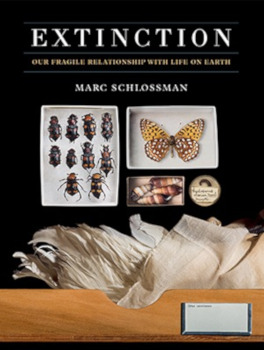 Our take: Schlossman, whom I interviewed in 2019, spent more than a decade photographing museum specimens of extinct and endangered species like the ivory-billed woodpecker and the Coontie hairstreak butterfly. The results, compiled at last in this beautiful book, could have been maudlin. Instead the photos and accompanying stories serve as a celebration of life through looking at death.
Our take: Schlossman, whom I interviewed in 2019, spent more than a decade photographing museum specimens of extinct and endangered species like the ivory-billed woodpecker and the Coontie hairstreak butterfly. The results, compiled at last in this beautiful book, could have been maudlin. Instead the photos and accompanying stories serve as a celebration of life through looking at death.
From the publisher: “Schlossman combines unique photographs of specimens from the Field Museum in Chicago with informative and insightful text about the species themselves, reasons for decline and the conservation efforts in place to prevent further extinction. The specimens revealed in this book are not on public display and the only way to see many of them is through these photographs, the result of ten years cataloguing key species from the museum’s zoology and botany collections. The images lead the reader to the species’ stories, promoting a greater understanding of mankind’s stewardship of life on Earth at a critical time in history.” (Published in the UK in June, available in the U.S. in Sept.)
Audubon at Sea: The Coastal and Transatlantic Adventures of John James Audubon
edited by Richard J. King and Christoph Irmscher
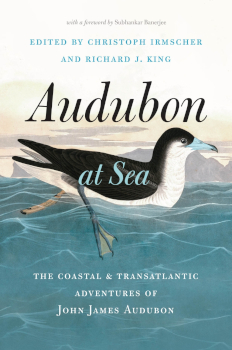 Our take: This collection of Audubon’s own writings reminds us why he’s both a celebrated conservation icon and a deeply flawed historic figure. That makes for essential reading at a time when some Audubon Society chapters, and even the international organization, struggle with the legacy of the slave-owning, bird-slaughtering conservationist for whom they are named.
Our take: This collection of Audubon’s own writings reminds us why he’s both a celebrated conservation icon and a deeply flawed historic figure. That makes for essential reading at a time when some Audubon Society chapters, and even the international organization, struggle with the legacy of the slave-owning, bird-slaughtering conservationist for whom they are named.
From the publisher: “Charting the course of Audubon’s life and work, from his birth in Haiti to his death in New York City, Irmscher and King’s sweeping introduction and carefully drawn commentary confront the challenges Audubon’s legacy poses for us today, including his participation in American slavery and the thousands of birds he killed for his art. Rounded out by hundreds of historical and ornithological notes and beautiful illustrations, and with a foreword by distinguished photographer and conservationist Subhankar Banerjee, Audubon at Sea is the most comprehensively annotated collection of Audubon’s work ever published.”
Related kids’ book — John Audubon and the World of Birds for Kids: His Life and Works, with 21 Activities by Michael Elsohn Ross
Endless Forms: The Secret World of Wasps
by Seirian Sumner
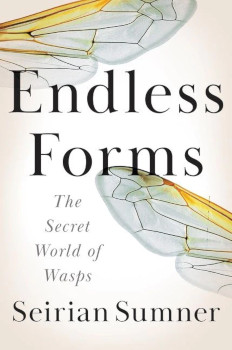 Our take: This gave me a new appreciation for a group of species that most of us seem to go out of our way to ignore.
Our take: This gave me a new appreciation for a group of species that most of us seem to go out of our way to ignore.
From the publisher: “Wasps are 100 million years older than bees; there are ten times more wasp species than there are bees. There are wasps that spend their entire lives sealed inside a fig; wasps that turn cockroaches into living zombies; wasps that live inside other wasps. There are wasps that build citadels that put our own societies to shame, marked by division of labor, rebellions and policing, monarchies, leadership contests, undertakers, police, negotiators and social parasites. Wasps are nature’s most misunderstood insect: as predators and pollinators, they keep the planet’s ecological balance in check. Wasps are nature’s pest controllers; a world without wasps would be just as ecologically devastating as losing the bees, or beetles or butterflies.”
The Last Beekeeper
by Pablo Cartaya
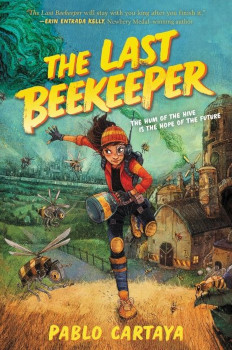 Our take: A fun science-fiction novel for middle-grade readers with strong messages about fighting against climate change, extinction and authoritarianism.
Our take: A fun science-fiction novel for middle-grade readers with strong messages about fighting against climate change, extinction and authoritarianism.
From the publisher: “In a future shaken by climate disasters, Yolanda Cicerón knows that nature is something to be feared. While life in the Valley is brutal and harsh, Yoly dreams of leaving her farm to live in Silo — the most advanced town for miles around. But first, Yoly will need to prove she belongs in a place where only the smartest and most useful are welcomed… As she cracks long-guarded secrets, Yoly, along with those closest to her, is put in grave peril and the only chance of surviving may lie in the rediscovery of a long-extinct species — the honeybee.”
An Immense World: How Animal Senses Reveal the Hidden Realms Around Us
by Ed Yong
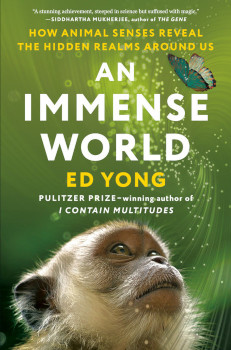 Our take: Birds do it, bees do it, even science journalists do it — they all look at and interact with the world in unique ways. Yong reminds us to break out of our limited worldview and experience our surroundings through someone else’s eyes, ears, tongues and additional sensory inputs.
Our take: Birds do it, bees do it, even science journalists do it — they all look at and interact with the world in unique ways. Yong reminds us to break out of our limited worldview and experience our surroundings through someone else’s eyes, ears, tongues and additional sensory inputs.
From the publisher: “The Earth teems with sights and textures, sounds and vibrations, smells and tastes, electric and magnetic fields. In An Immense World, Ed Yong coaxes us beyond the confines of our own senses… We learn what bees see in flowers, what songbirds hear in their tunes and what dogs smell on the street. We listen to stories of pivotal discoveries in the field, while looking ahead at the many mysteries that remain unsolved.”
Related book — The Secret Perfume of Birds: Uncovering the Science of Avian Scent by Danielle J. Whittaker
No Country for Eight-Spot Butterflies
by Julian Aguon
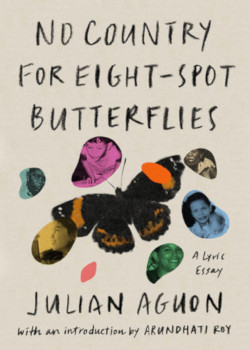 Our take: A lot has been written about Guam’s silent forests, where invasive snakes have killed virtually all the island’s native birds. Less has been written about Guam’s other declining species, let alone the people who grew up with them. This book of essays and poetry isn’t as wildlife-focused as the title would have you believe, but it’s powerful, essential reading often related to the loss of birds, bugs and nature as a whole.
Our take: A lot has been written about Guam’s silent forests, where invasive snakes have killed virtually all the island’s native birds. Less has been written about Guam’s other declining species, let alone the people who grew up with them. This book of essays and poetry isn’t as wildlife-focused as the title would have you believe, but it’s powerful, essential reading often related to the loss of birds, bugs and nature as a whole.
From the publisher: “A collection of essays on resistance, resilience and collective power in the age of climate disaster from Chamorro human rights lawyer and organizer Julian Aguon… In bracing poetry and compelling prose, Aguon weaves together stories from his childhood in the villages of Guam with searing political commentary about matters ranging from nuclear weapons to global warming.”
Get more from The Revelator. Subscribe to our newsletter, or follow us on Facebook and Twitter.
Previously in The Revelator:
Saving Mother Earth: New Books About Feminism and Women Protecting the Planet

